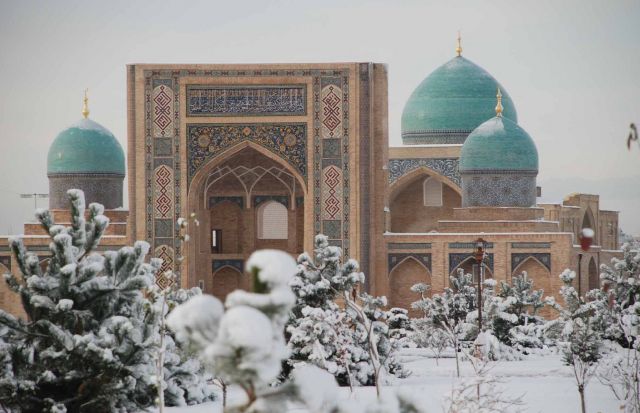BIOGRAPHY OF IMAM BUKHARI

Muhammad al-Bukhari mausoleum near Samarkand, Uzbekistan
Abū ‘Abd Allāh Muḥammad ibn Ismā‘īl ibn Ibrāhīm ibn al-Mughīrah ibn Bardizbah al-Ju‘fī al-Bukhārī (Arabic: أبو عبد الله محمد بن اسماعيل بن ابراهيم بن المغيرة بن بردزبه الجعفي البخاري; 19 July 810 – September 870), or Bukhārī (Persian: بخاری), commonly referred to as Imam al-Bukhari or Imam Bukhari, was a Persian[2][3][4] Islamic scholar who authored the hadith collection known as Sahih al-Bukhari, regarded by Sunni Muslims as one of the most sahih (authentic) of all hadith compilations. He also wrote the books Al-Adab al-Mufrad.
BIRTH:
Muhammad ibn Isma`il al-Bukhari al-Ju`fi was born after the Jumu'ah prayer on Friday, 13 Shawwal 194 AH (19 July 810) in the city of Bukhara in Khorasan (in present-day Uzbekistan).[2][6]
His father, Ismail ibn Ibrahim, a scholar of hadith, was a student and associate of Malik ibn Anas. Some Iraqi scholars related hadith narrations from him.[2]
Lineage:
Bukhari's great-grandfather, al-Mughirah, settled in Bukhara after accepting Islam at the hands of Bukhara's governor, Yaman al-Ju`fi. As was the custom, he became a mawla of Yaman, and his family continued to carry the nisbah of "al-Ju`fi".[2][6][7]
Al-Mughirah's father, Bardizbah, is the last known ancestor of Bukhari according to most scholars and historians. He was a Magian and died as such. As-Subki is the only scholar to name Bardizbah's father, who he says was named Bazzabah (Persian: بذذبه). Little is known of Bardizbah or Bazzabah, except that they were Persian and followed the religion of their people.[2]
Historians have also not come across any information on Bukhari's grandfather, Ibrahim ibn al-Mughirah.[2]
Hadith studies and travels:
The historian al-Dhahabi described his early academic life:
He began studying hadith in the year 205 (A.H.). He memorized the works of [‘Abdullah] ibn al-Mubaarak while still a child. He was raised by his mother because his father died when he was an infant. He traveled with his mother and brother in the year 210 after having heard the narrations of his region. He began authoring books and narrating hadith while still an adolescent. He said, “When I turned eighteen years old, I began writing about the Companions and the Followers and their statements. This was during the time of ‘Ubaid Allah ibn Musa (one of his teachers). At that time I also authored a book of history at the grave of the Prophet at night during a full moon.[8]
At age of sixteen, he, together with his brother and widowed mother, made the pilgrimage to Mecca. From there he made a series of travels in order to increase his knowledge of hadith. He went through all the important centres of Islamic learning of his time, talked to scholars and exchanged information on hadith. It is said that he heard from over 1,000 men, and learned over 600,000 traditions.
After sixteen years' absence he returned to Bukhara, and there drew up his al-Jami' as-Sahih, a collection of 7,275 tested traditions, arranged in chapters so as to afford bases for a complete system of jurisprudence without the use of speculative law.
His book is highly regarded among Sunni Muslims, and considered the most authentic collection of hadith, even ahead of the Muwatta Imam Malik and Sahih Muslim of Bukhari's student Muslim ibn al-Hajjaj. Most Sunni scholars consider it second only to the Quran in terms of authenticity. He also composed other books, including al-Adab al-Mufrad, which is a collection of hadiths on ethics and manners, as well as two books containing biographies of hadith narrators (see isnad).
Last years:
In the year 864/250, he settled in Nishapur. It was in Neyshābūr that he met Muslim ibn al-Hajjaj. He would be considered his student, and eventually collector and organiser of hadith collection Sahih Muslim which is considered second only to that of al-Bukhari. Political problems led him to move to Khartank, a village near Samarkand where he died in the year 870/256

No comments:
Post a Comment